I recently took a day-trip to Poland to see Auschwitz while staying in Berlin with a friend. I took a night train to Krakow. Poland's carrier, PKP, had a sale to Krakow (Krakow!) in a sleeping car for just 40 euro. The train is quite cozy. It's the convertable type with six bunks cramped into one compartment.
I shared a compartment with an older guy from Australia who was on a similar pilgrimage. His grandparents sent his mother on a children's refugee transport to Australia when she was nine. The parents didn't survive.
I slept comfortably until I was rudely awakened by border security for passport inspection. It's a bit harrowing when half-asleep to have security stomping through the train at 2am, accompanied by the thud of the stamps against the walls. But I scored "Poland" on my passport.
In the morning I could see the glimering mountains of coal. Poland's not much to look at. In fact, the train was a dump compared to Germany. The train arrived in Krakow around 9am, right on time. I accidentally went into Westfield Shoppingtown Krakow, but found my way to the main station. While booking my return ticket, a taxi driver approached me, apparently the most Jewish-looking person for miles, and asked "Auschwitz?" Much as I'd like to add Poland to my list of countries in which I've been driven by a Polish cabbie, I wasn't ready to drop 150 Zloty on the experience.
Here we go:
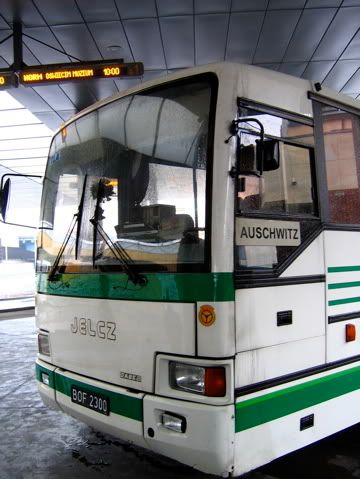
From the main terminal I took a public bus (about $2, 1.5 hours, and smelled of the driver's armpit) directly to Oswiecim (Auschwitz is the German name).
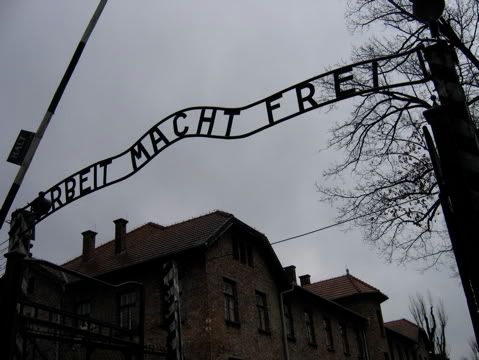
"Work will set you free"
(Literally, Work makes freedom)
This is the main gate to Auschwitz, originally a Polish army barracks. It was turned into a concentration camp for political prisoners, POW's, and later, "undesireables." The larger, more well-known Auschwitz-II/Birkenau camp was built later for mass exterminations. A third Auschwitz, Monowice, plus some 40 sub-camps also existed, mostly industry-related.
If you go alone, you can join a tour for about $10. While waiting for the tour, I took a look around for myself:
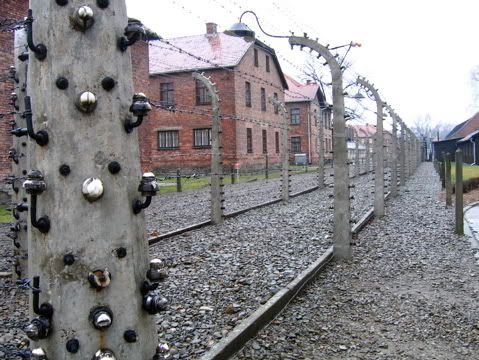
Electified Fences
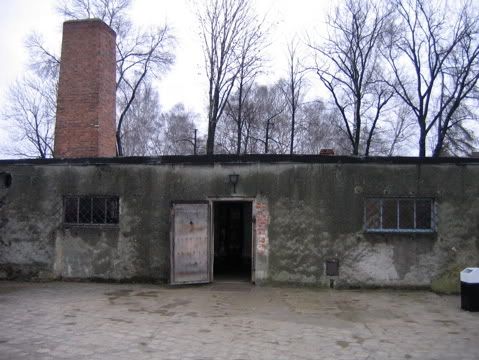
This is the first operational gas chamber and crematorium, and the only one left intact. It was originally a munitions bunker, and after its use as a gas chamber it was dismantled and used as a bunker towards the end of the war. Afterwards, the cremation and gas equipment were found nearby and the chamber was reconstructed.
People are asked not to take pictures indoors throughout the camp.
My tour began around 1pm with a movie, and then a bus trip to Birkenau.
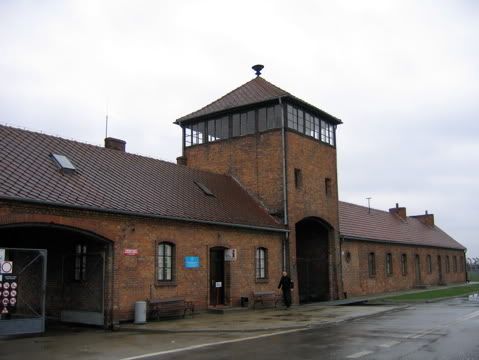
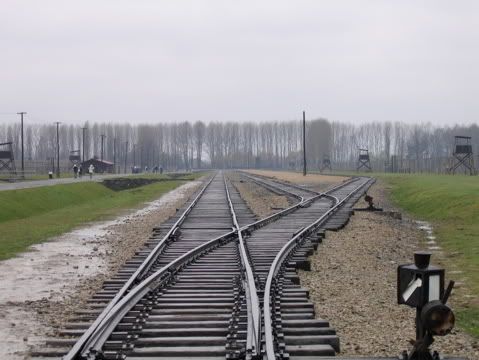
The camp is surprisingly vast and quiet. It's nearly impossible to imagine what happened here.
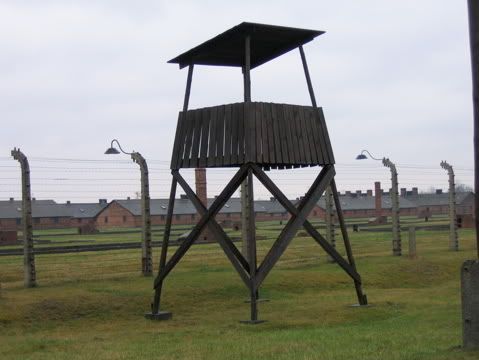
A few of the barracks are left intact. The weather was pretty awful that day.
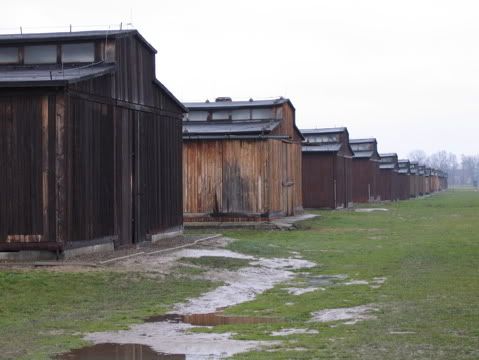
One of the most moving moments came when a large group of Israeli high school students entered the camp, flags unfurled and roses in hand.

Throughout the camp, especially on the cremation beds, one can find memorial candles and flowers.
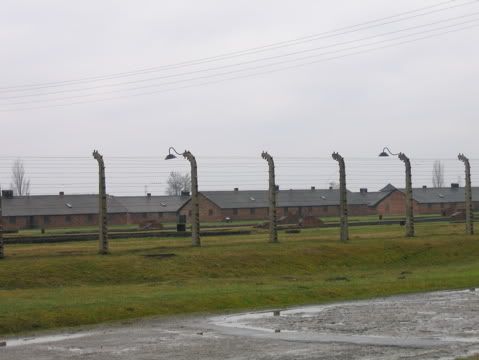
This is the long walk to where the massive gas chambers used to be.
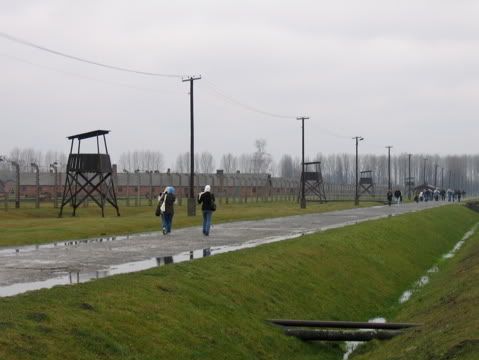
As the Soviets advanced, the gas chambers as well as their meticulous records were destroyed by the Nazis. Now there is a stunning memorial instead:
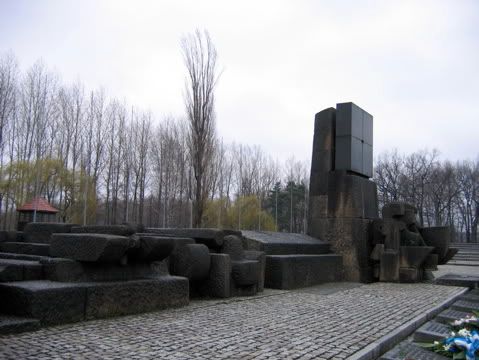
For ever let this place be
a cry of despair
and a warning to all humanity
where the Nazis murdered
about one and a half
million
Men, Women, and Children
mainly Jews
from various countries of Europe.
Auschwitz-Birkenau
1940 - 1945
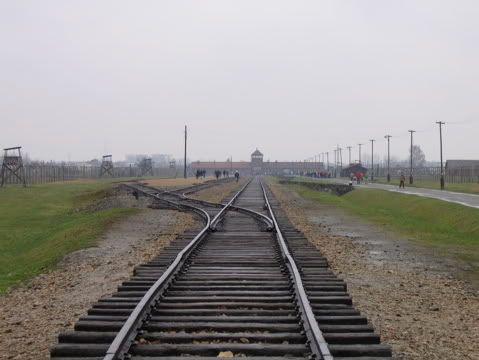
We passed the few remains of the actual mass gas chambers, left untouched since the war.
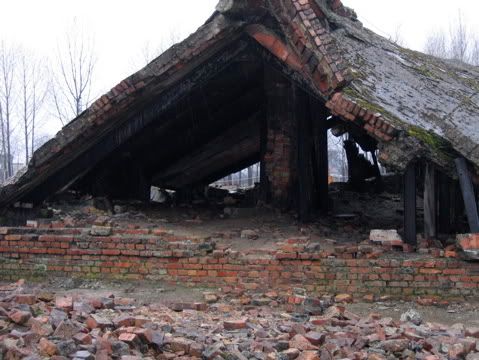
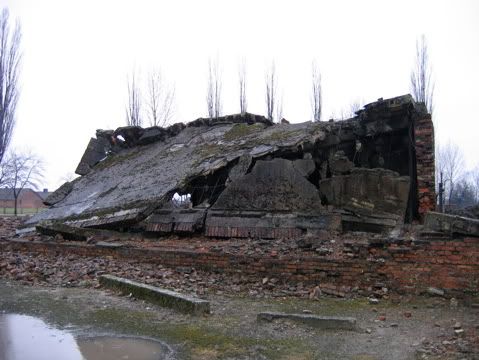
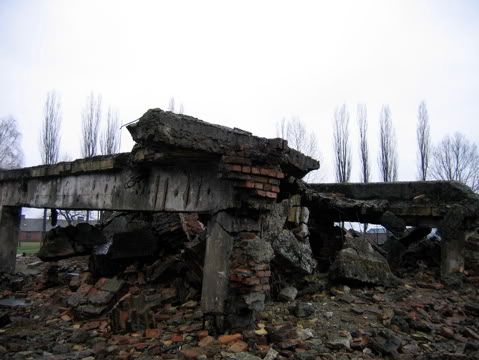
And then the skeletal remains of the Womens' quarters.
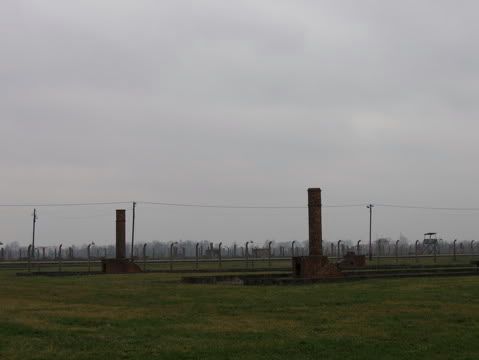
We took the shuttle back to Auschwitz-I, and continued the tour. Sometimes the camp looks eerily like a quiet neighborhood:
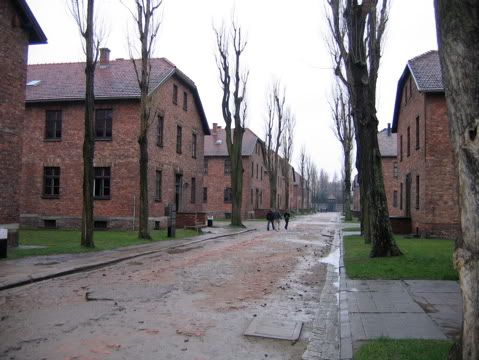
Now, these buildings have been renovated and are used as offices as well as various mini-museums. One of them outlined the war itself, one was about the impact on Poland. But several of them were particularly disturbing, as they contained "proof of extermination" in the form of huge room filled with a fraction of the human hair found at Auschwitz, shaved from womens' heads to be used in textiles. Another room was filled with shoes, another with suitcases. One room was filled with pots and pans, then glasses, shaving utensils. Every possesion was stripped and organized by the Nazis for reuse or recycling. There was also a scale model of the gas chamber with the walls cut out so with one glance you could see people being led underground, told to strip nude, then mounds of dead in the showers and finally in the crematorium. It was utterly horrific.
Again, we were asked not to take pictures.
Finally, we went to Block 11, a special barracks used as a camp jail. Yes, there was a jail.
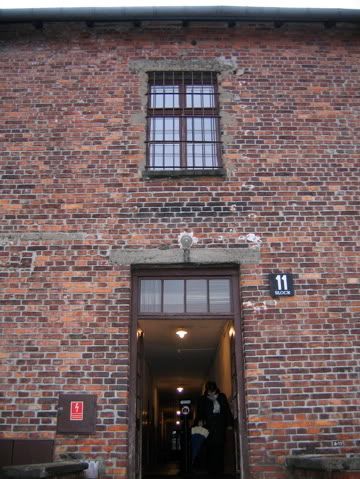
It was here the first tests of Zyklon-B took place, as well as inhumane imprisonment like cramming 40 men into one room until half suffocated, or cramming four people at a time into closet-spaced "standing cells" in which they were forced to sleep standing after a full day's work.
The whole visit took about 6 hours, and I left feeling I could've spent more time looking at the exhibits, and just walking around Birkenau by myself. All in all, the museum is very well done, and very respectful.
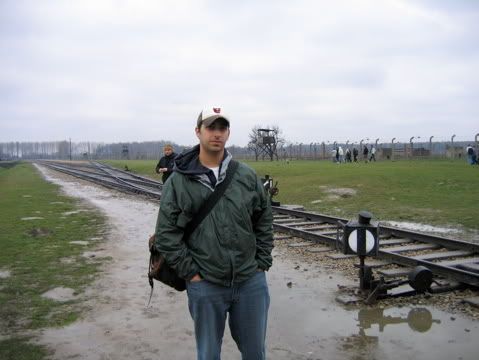
So, since tonight is Passover, I don't want to finish on such a depressing note. Right now I'm in Israel, staying with my Aunt in Jerusalem. The center of her neighborhood has a plaza called Kirkat Denya (Denmark Square). It's a monument to the Danish people who saved nearly all the Jews in Denmark.
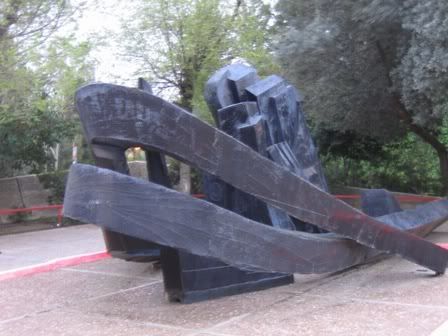
"In October 1943 the Danish People and resistance movement defied the Nazi occupation of their country to rescue their Jewish fellow citizens. During ten nights, almost all Danish Jewry, over seven thousand people, were spirited across the Oeresund in fishing boats and other small craft to safety in Sweden. Danish courage and Swedish generosity gave indelible proof of human values in times of barbarism.
Israel and Jews everywhere will never forget."
Happy Passover!
5 comments:
Thanks for sharing this today Jonathan. I'm glad that Israel came after the trip, so now you get to experience why we need it and the hope of the new/old land. Definitely go to Mt. Herzel and take the tour, you'll love it.
Chag Semeach!
this was the post i meant was amazing.
Wonderful pictures!! What an amazing trip.
Hi Jonathan, I just discovered your blog after reading about it on Haveil Havalim hosted over at BARBARA'S TCHATZKAHS. I very much appreciated your post and have added your to my blogroll. Thank you, again.
Thank you so much for this post!! History is always intriguing and poignant! I can guess how you felt!
This is Ibrahim from Israeli Uncensored News
Post a Comment